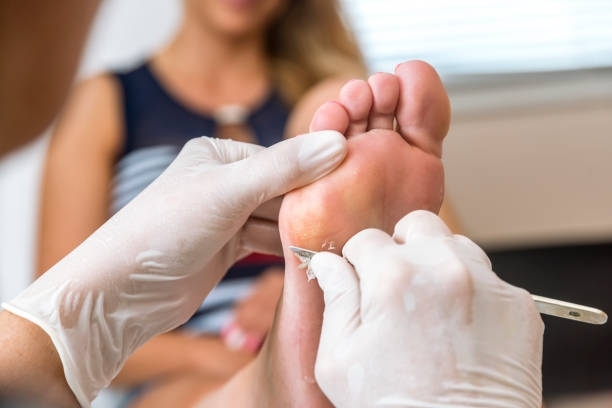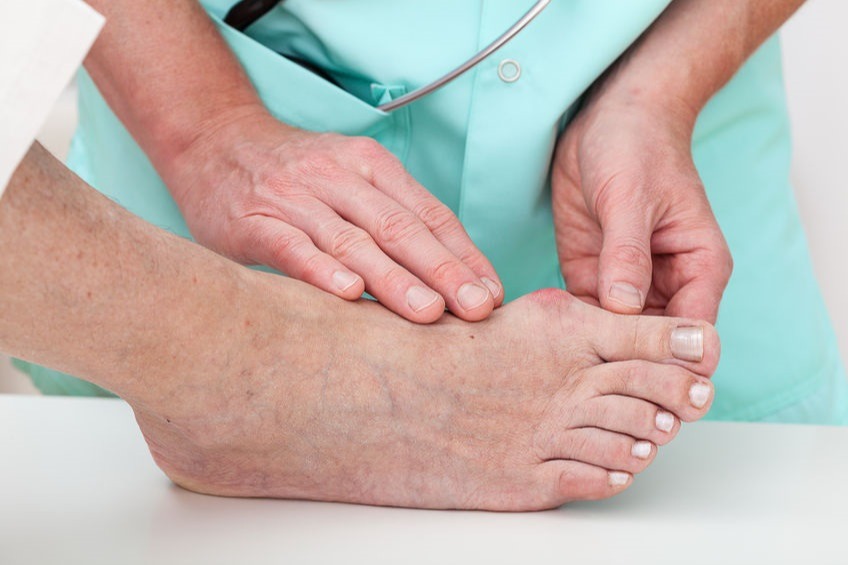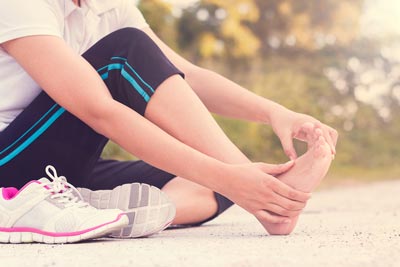Soothe Your Feet: How to Find the Right Athlete’s Foot Doctor Near Me
Imagine this: you’re an active person, always on the go, whether it’s hitting the gym, running errands, or just enjoying a walk in the park. Suddenly, you start feeling an uncomfortable itchiness, redness, and even cracking between your toes. These could be symptoms of athlete’s foot, a common fungal infection that can be both annoying and painful. Ignoring these symptoms can lead to complications, making professional medical care essential. In this guide, we’ll explore how to find the right athlete’s foot doctor near me, ensuring that your feet stay healthy and happy.
Understanding Athlete’s Foot
- What is Athlete’s Foot?: Athlete’s foot, also known as tinea pedis, is a fungal infection that typically affects the skin on the feet. It is caused by the same type of fungi that lead to other skin infections, like ringworm. This condition thrives in warm, moist environments, such as the insides of shoes, between the toes, and public showers or swimming pools.
- Symptoms and Causes of Athlete’s Foot: Common symptoms of athlete’s foot include itching, stinging, and burning sensations, particularly between the toes. The skin may appear red, scaly, and cracked, which can lead to blisters and peeling. The primary cause of athlete’s foot is exposure to the fungi, which can be contracted from contaminated surfaces or sharing personal items like towels. Factors such as excessive sweating, wearing tight shoes, and not practicing proper foot hygiene can also increase the risk of developing this infection.
- How Can Athlete’s Foot Be Prevented?: Preventing athlete’s foot involves maintaining good foot hygiene. Always keep your feet clean and dry, especially between the toes. Wearing moisture-wicking socks can help reduce moisture buildup, while avoiding walking barefoot in communal areas, such as locker rooms or swimming pools, lowers your risk of exposure to fungi. Changing your shoes regularly and using antifungal powders also support a fungal-free environment for your feet.

Athlete’s Foot Doctor
The Importance of Seeking Professional Medical Care
- Why Seek Medical Care for Athlete’s Foot?: Seeking medical care for athlete’s foot is essential because home remedies and over-the-counter treatments may not be effective for everyone. A doctor can provide a more accurate diagnosis and recommend treatments that are tailored to your specific condition.
- Potential Complications if Left Untreated: If left untreated, athlete’s foot can lead to more severe infections that can spread to other parts of the body. It can also cause chronic pain and discomfort, making it difficult to walk or perform daily activities. In some cases, the infection can spread to the toenails, causing a condition known as onychomycosis, which is much harder to treat.
- How Can a Doctor Help Treat Athlete’s Foot?: A doctor can prescribe stronger antifungal medications, both topical and oral, to effectively treat the infection. They can also provide guidance on proper foot care and preventive measures to avoid future infections. In severe cases, they may perform procedures to remove damaged tissue.
Finding the Right Athlete’s Foot Doctor Near You
- Factors to Consider When Choosing a Doctor: When searching for a suitable athlete’s foot doctor, consider their qualifications, experience, and areas of specialization. Look for a dermatologist or a podiatrist with a strong background in treating fungal infections. Patient reviews and testimonials can provide insight into their practice and patient care approach. Additionally, consider the location of the clinic and the availability of appointment times that suit your schedule.
- Where to Find a Qualified Athlete’s Foot Doctor: Start your search by consulting your primary care physician for referrals. You can also check local health directories or online platforms like Healthgrades or Zocdoc, which provide ratings and reviews to help you make an informed choice. Community health clinics and foot care specialists in your area may also be viable options for seeking treatment.
- Questions to Ask When Scheduling an Appointment: Before your visit, it’s helpful to prepare a list of questions to ensure the doctor is the right fit for you. Consider asking about their experience with treating athlete’s foot, the types of treatments they recommend, and what strategies they suggest to prevent recurrence. Inquire about the duration of treatments, potential side effects, and any required follow-up visits. It’s also critical to discuss insurance coverage and payment options to avoid unexpected costs.
The Benefits of Choosing a Podiatrist
- What is a Podiatrist?: A podiatrist is a medical professional who specializes in diagnosing and treating conditions related to the feet, ankles, and lower limbs. They have undergone extensive training, typically earning a Doctor of Podiatric Medicine (DPM) degree, which equips them with the knowledge needed to address various foot and ankle issues, including injuries, infections, and chronic conditions.
- Why Choose a Podiatrist for Foot and Ankle Concerns?: Choosing a podiatrist for foot and ankle concerns ensures that you receive specialized care tailored to your condition. Podiatrists possess an in-depth understanding of foot anatomy and its complexities, equipping them to provide accurate diagnoses and effective treatments. Their focused expertise allows them to address various issues, from common ailments like athlete’s foot to more complex conditions, ensuring comprehensive care for your feet and ankles.
- How Can a Podiatrist Help with Athlete’s Foot?: A podiatrist can offer advanced treatments for athlete’s foot, including prescription antifungal medications and laser therapy to effectively eliminate the infection. Additionally, they can design specialized foot care routines and provide custom orthotics to alleviate discomfort, enhance foot health, and help prevent future occurrences of athlete’s foot.
What to Expect During Your Appointment
- What Will the Doctor Do During Your Appointment?: During your appointment, the doctor will examine your feet and ask about your symptoms and medical history. They may take a skin sample to confirm the diagnosis and determine the type of fungus causing the infection.
- How Will They Diagnose and Treat Athlete’s Foot?: The diagnosis is usually based on the appearance of the affected skin and the results of any tests performed. The doctor will then recommend a treatment plan, which may include topical or oral antifungal medications, lifestyle changes, and follow-up appointments to monitor your progress.
- What Can You Do to Prepare for Your Appointment?: To prepare for your appointment with athlete foot doctor, make a list of your symptoms, any treatments you’ve tried, and any questions you have for the doctor. Wear clean, comfortable shoes and bring a pair of sandals to avoid walking barefoot in the doctor’s office.
Common Treatments for Athlete’s Foot
- What Are the Most Common Treatments for Athlete’s Foot?: The most common treatments for athlete’s foot include over-the-counter antifungal creams, sprays, and powders. In more severe cases, prescription-strength medications may be necessary.
- How Do Antifungal Medications Work?: Antifungal medications work by killing or inhibiting the growth of the fungi causing the infection. Topical treatments are applied directly to the affected area, while oral medications are taken by mouth and work systemically.
- Are There Any Home Remedies That Can Help?: Some home remedies may help alleviate the symptoms of athlete’s foot, such as soaking your feet in a mixture of water and vinegar, applying tea tree oil, or using over-the-counter antifungal products. However, these remedies should not replace professional foot treatment.

Athlete’s Foot Specialist
How to Prevent Athlete’s Foot from Recurring
- What Steps Can You Take to Prevent Athlete’s Foot from Coming Back?: To prevent athlete’s foot from recurring, maintain good foot hygiene, keep your feet dry, and avoid sharing towels, shoes, or socks. Use antifungal powders and sprays regularly, and choose breathable footwear.
- What Hygiene Practices Should You Follow?: Wash your feet daily with soap and water, dry them thoroughly, and pay special attention to the areas between your toes. Change your socks daily and use moisture-wicking materials to keep your feet dry.
- How Often Should You See a Doctor for Check-Ups?: Regular check-ups with a doctor can help monitor your foot health and prevent future infections. If you’re prone to athlete’s foot, consider seeing a podiatrist every six months for preventive care.
Tips for Managing the Symptoms of Athlete’s Foot
- How Can You Manage Itching and Discomfort Caused by Athlete’s Foot?: To manage itching and discomfort, apply over-the-counter antifungal creams and powders, keep your feet clean and dry, and avoid scratching the affected area. Wearing open-toed shoes can also help reduce moisture and friction.
- Are There Any Over-the-Counter Products That Can Help?: Over-the-counter products like antifungal creams, sprays, and powders can effectively treat mild cases of athlete’s foot. Look for products containing ingredients like clotrimazole, miconazole, or terbinafine.
When Should You Contact Your Doctor if Symptoms Persist?
If your symptoms persist or worsen after using over-the-counter treatments, contact your doctor for a more comprehensive evaluation and stronger prescription medications.
When to Seek Emergency Medical Care
- When is Athlete’s Foot Considered an Emergency?: Athlete’s foot is considered an emergency if you experience severe pain, swelling, or signs of a secondary infection, such as pus or fever. These symptoms may indicate a more serious condition that requires immediate medical attention.
- What Are the Symptoms of a Severe Infection?: Symptoms of a severe infection include intense redness, increased pain, swelling, pus, and fever. If you notice any of these symptoms, seek medical care promptly to avoid complications.
What Should You Do If You Experience a Medical Emergency?
If you experience a medical emergency foot care related to athlete’s foot, contact your doctor immediately or visit the nearest emergency room. Timely intervention can prevent the infection from spreading and causing further damage.
The Importance of Self-Care for Foot Health
- Why is it Important to Take Care of Your Feet?: Taking care of your feet is essential for overall health and well-being. Healthy feet allow you to stay active, maintain mobility, and prevent issues like athlete’s foot and other infections.
- What Are Some Self-Care Practices You Can Follow to Maintain Foot Health?: Some self-care practices for maintaining foot health include washing your feet daily, keeping them dry, trimming your toenails properly, and wearing comfortable, well-fitting shoes. Regularly moisturizing your feet can also prevent dryness and cracking.
- How Can Regular Foot Care Help Prevent Athlete’s Foot and Other Foot Conditions?: Regular foot care can help prevent athlete’s foot and other foot conditions by keeping your feet clean, dry, and free from fungi and bacteria. Routine check-ups with a podiatrist can also catch potential issues early and prevent them from becoming severe.

Athlete’s Foot Care
Flagstaff Foot and Ankle: Your Trusted Athlete’s Foot Doctor
- What Makes Flagstaff Foot and Ankle the Right Choice for Athlete’s Foot Care?: Flagstaff Foot and Ankle is known for its expertise in treating foot and ankle conditions, including athlete’s foot. Their team of experienced podiatrists uses advanced techniques and personalized treatment plans to ensure optimal outcomes for their patients.
- What Services Do They Offer?: Flagstaff Foot and Ankle offers a wide range of services, including diagnosis and treatment of athlete’s foot, custom orthotics, preventive care, and surgical interventions if necessary. They also provide education on foot care to help patients maintain healthy feet.
- How Can You Schedule an Appointment with Their Team of Expert Podiatrists?: Scheduling an appointment with Flagstaff Foot and Ankle is easy. Visit their website, call their office, or use their online booking system to find a convenient time for your visit. Their friendly staff will assist you in setting up your appointment and answering any questions you may have.
Conclusion
Athlete’s foot can be a persistent and uncomfortable condition, but with the right care and attention, it can be effectively managed and prevented. By understanding the symptoms, seeking professional medical care, and following proper foot hygiene practices, you can keep your feet healthy and free from infections. Remember, regular visits to a podiatrist like those at Flagstaff Foot and Ankle can provide the expertise and support you need for optimal foot health. If you’re experiencing symptoms of athlete’s foot, don’t wait—schedule an appointment today and take the first step towards healthier, happier feet.
Flagstaff Foot Doctors: Anthony Rosales DPM
https://www.google.com/maps?cid=8835841318590452161
421 N Humphreys St, Flagstaff, AZ 86001, United States
(928) 774-4825
https://flagstafffootandankle.com/
